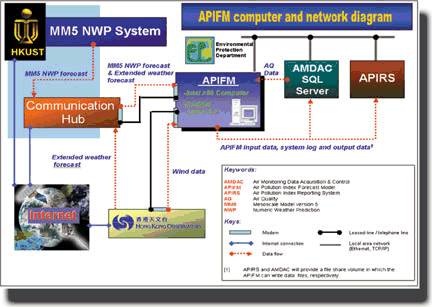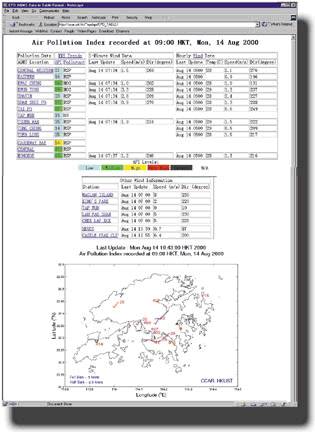|
Operation
The APIFM system is configured to gather external data through a local area
network and a telephone line. The input data includes Air Quality data (i.e., CO, NO2, O3, SO2
and RSP) collected from the Air Quality Monitor stations, real-time
meteorological data from the Hong Kong Observatory, and Numerical
Weather Forecast Information from HKUST. The output data are
saved in HTML format which can be easily viewed and/or printed using
standard Web browsers such as Netscape and Internet Explorer. The system operation is designed to be fully
automatic and requires little administrative work. Once the
hardware is turned on, the system automatically reads the external
data, starts up the model run, archives all input and output data, and
cleans up older data at scheduled times. Currently, the APIFM
predicts the daily and hourly API, as well as the hourly concentration
for each pollutant at each monitoring site. |



